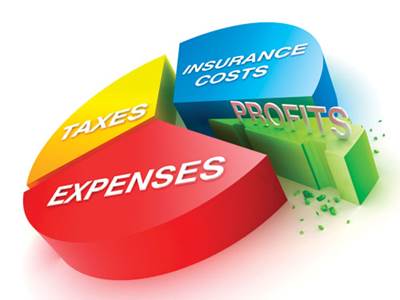Manufacturing the Most Out of Your Vehicle Deductions
There are two basic ways to write off expenses for use of your personal vehicle for business-related travel: the standard mileage method or the actual expense method.
The standard mileage method provides a basic deduction for mileage and provides built-in depreciation. The basis for this methodology is for the taxpayer to document the number of business miles travelled in a year. For each business mile travelled, the deduction is calculated using a cents per mile formula. For 2011, the cents per mile rate was fifty-one (51) cents per mile from January 2011 through June 30, 2011 and fifty-five and half (55.5) cents per mile from July 1, 2011 through December 31, 2011 (up from 50 cents in 2010). The mileage rate remains at 55.5 cents per mile for 2012. For example, if a manufacturer’s salesperson travelled 2,000 miles between customers in his personal vehicle during from July 1, 2011 through December 31, 2011, the deduction would be $1,110 for business use of their personal vehicle.
The second method is the actual expense method. This method requires more detailed documentation. The actual expense method requires the taxpayer to keep receipts associated with various vehicle expenses (i.e. gas, oil, insurance, etc.). The expenses are then multiplied by a percentage to calculate the amounts to be deducted on the individual’s tax return. The percentage used to calculate the expense deduction is the number of business miles driven in a given year over the total number of miles. Additionally, the business purpose of each business mile must be documented. For example, if the salesperson from the previous example drives 15,000 in a year and 9,000 was related to his sales position and the remaining 6,000 for personal reasons then the actual expenses for the year are multiplied by 60% (9,000 / 15,000).
The depreciation associated with the actual expense method is the annual amount of depreciation allowed under the current tax law multiplied by percentage of business miles over total miles. If you lease a vehicle, depreciation does not apply.
The overall benefit of deducting expenses for a vehicle depends on factors of an individual’s tax return. If a person is “self employed” and earns income as an independent contractor it is very likely this income is reported on Schedule C of Form 1040. A Schedule C filer can offset income earned directly by utilizing either one of the two methods mentioned above. However, if an individual is an “employee” that typically receives a W-2, then the benefit of deducting vehicles expenses can be diminished. An employee that does not receive reimbursement can report the excess expenses over reimbursements received on Form 2106 Employee Business Expenses. However, the expenses calculated on this form are reported on Schedule A, Itemized Deductions and are limited to two-percent (2%) of an individual’s Adjusted Gross Income (AGI). An example would be if an individual earns $100,000 on a W-2 from a manufacturing company and has $2,500 of unreimbursed employee business vehicle expenses, the amount allowed as a deduction would be $500 ($2,500 reduced by $100,000 x 2% or $2,000). If an individual that is also an employee takes the standard deduction, then no benefit would result from utilizing Form 2106.
For More Information:
Frost, PLLC
(501) 376-9241
cwigginton@frostpllc.com
frostpllc.com
Related Content
Transforming Moldmaking into Digital Industrial Manufacturing
Moldmaking and digitalization is at the core of this global industrial manufacturing company’s consolidation and diversification plan.
Read MoreWomen Impacting Moldmaking
Honoring female makers, innovators and leaders who are influencing our industry's future.
Read MoreFrom Injection Mold Venting to Runnerless Micro Molds: MMT's Top-Viewed June Content
The MoldMaking Technology team has compiled a list of the top-viewed June content based on analytics. This month, we covered an array of topics including injection mold venting, business strategies and runnerless micro molds. Take a look at what you might have missed!
Read MoreThe Trifecta of Competitive Toolmaking
Process, technology and people form the foundations of the business philosophy in place at Eifel Mold & Engineering.
Read MoreRead Next
Five Important Tax Changes Beneficial to Your Shop
On December 17, 2010 President Obama signed The Tax Relief, Unemployment Insurance Reauthorization, and Job Creation Act of 2010 (2010 Tax Relief Act) that includes important depreciation and IRC Sec. 179 deduction changes, which were retroactive to September 9, 2010 and will benefit both large and small manufacturers.
Read MoreHow to Use Continuing Education to Remain Competitive in Moldmaking
Continued training helps moldmakers make tooling decisions and properly use the latest cutting tool to efficiently machine high-quality molds.
Read MoreHow to Use Strategic Planning Tools, Data to Manage the Human Side of Business
Q&A with Marion Wells, MMT EAB member and founder of Human Asset Management.
Read More









.jpg;maxWidth=300;quality=90)




_300x250 1.png;maxWidth=300;quality=90)







_970x250 1.png;maxWidth=970;quality=90)